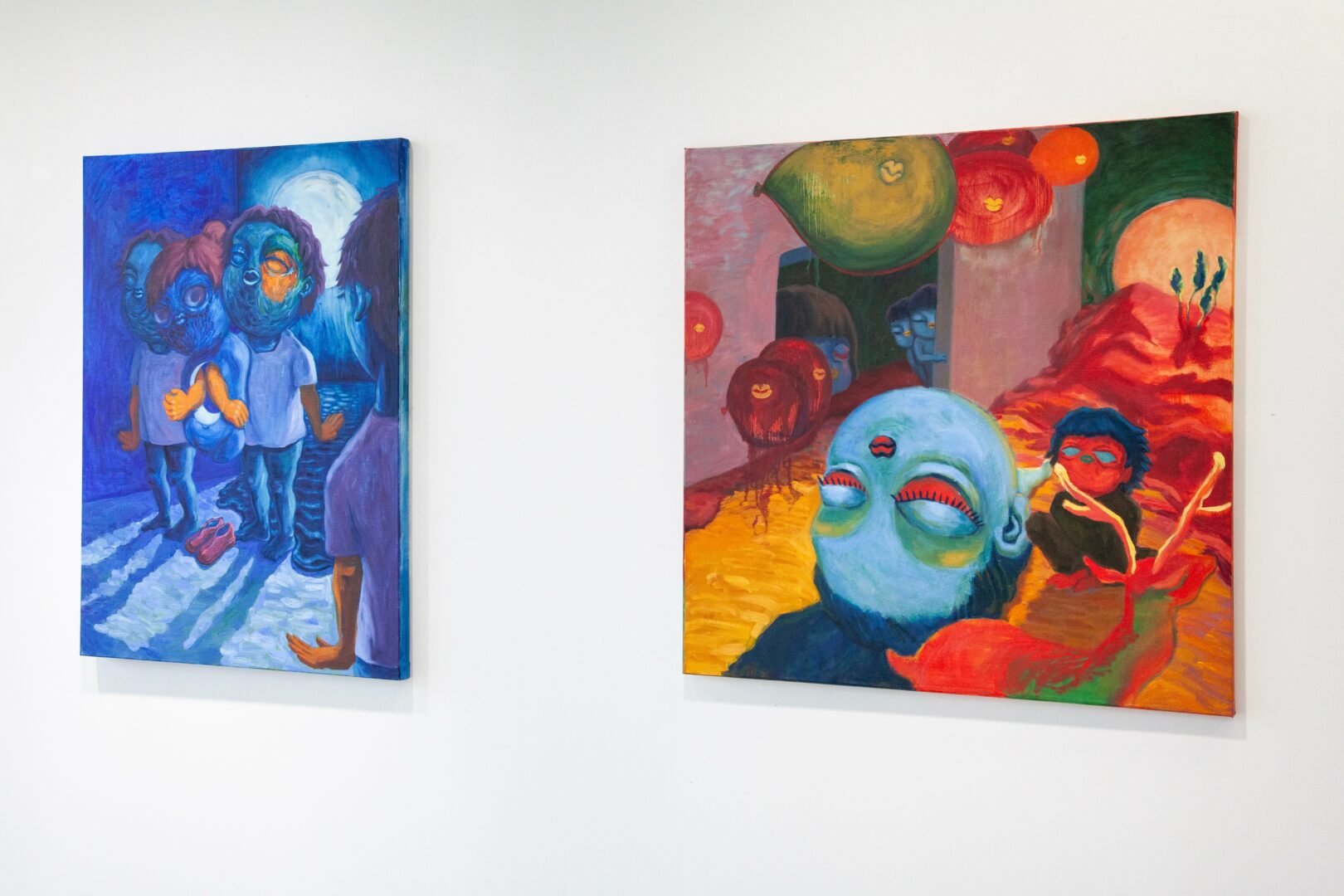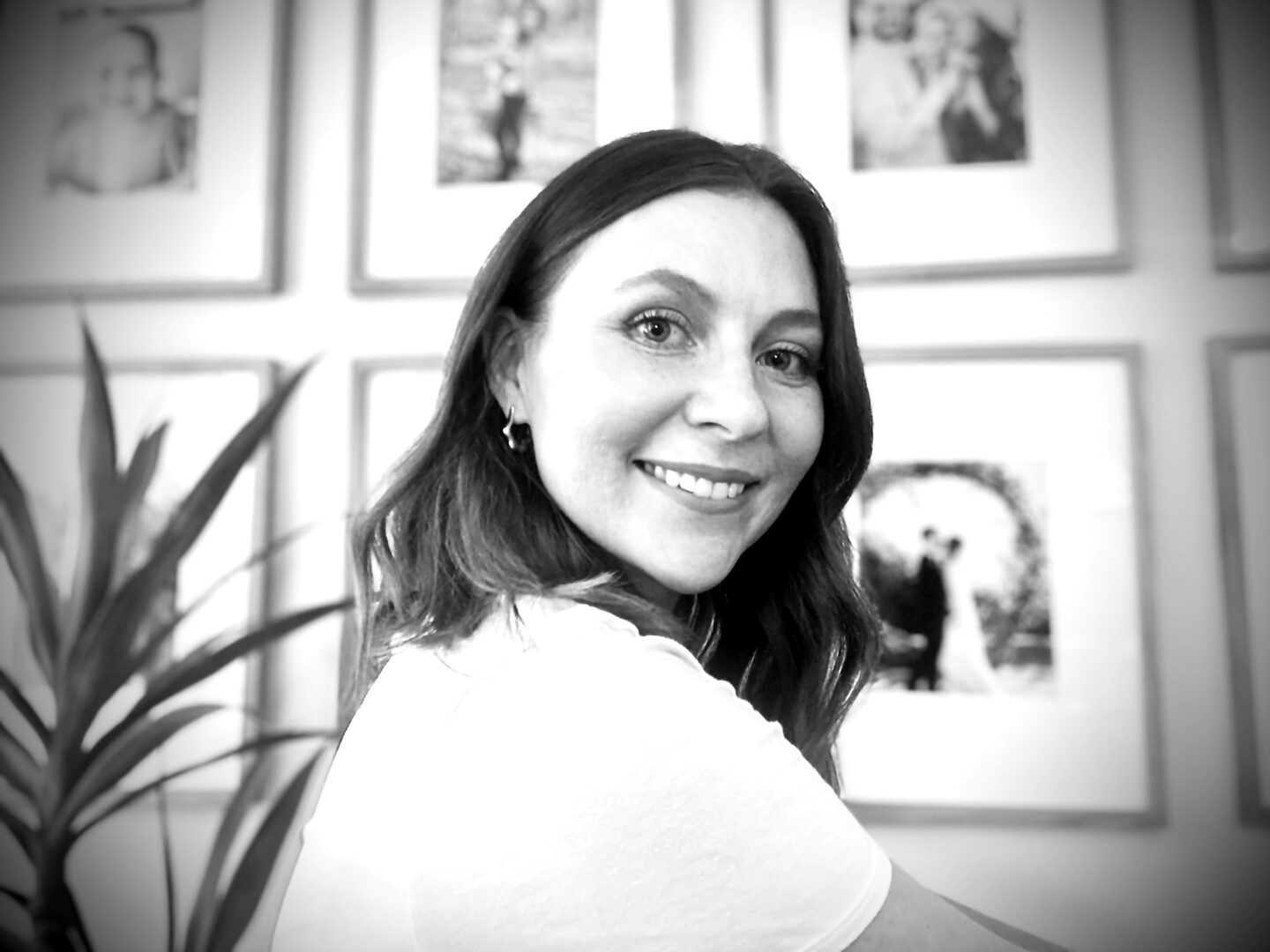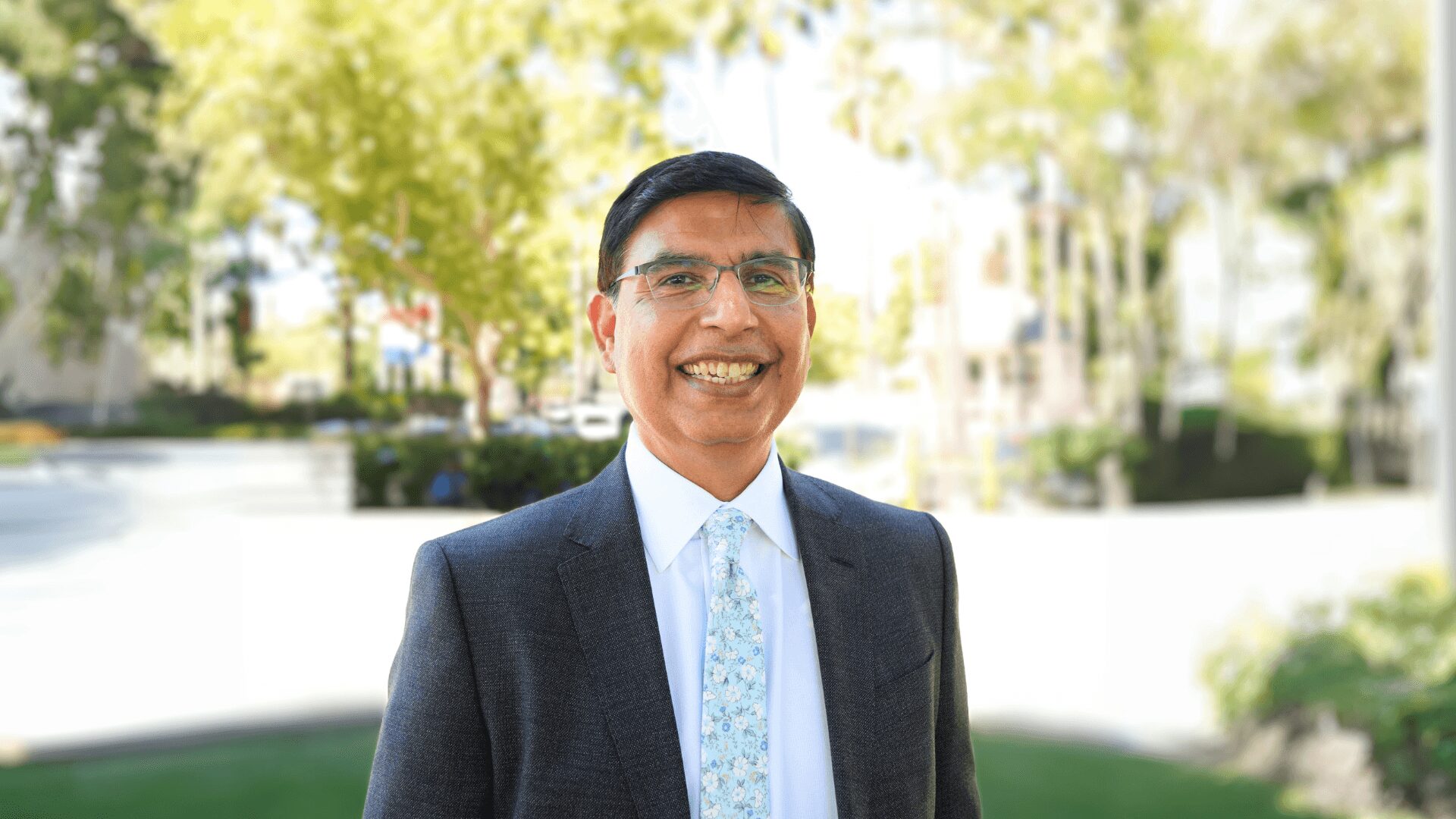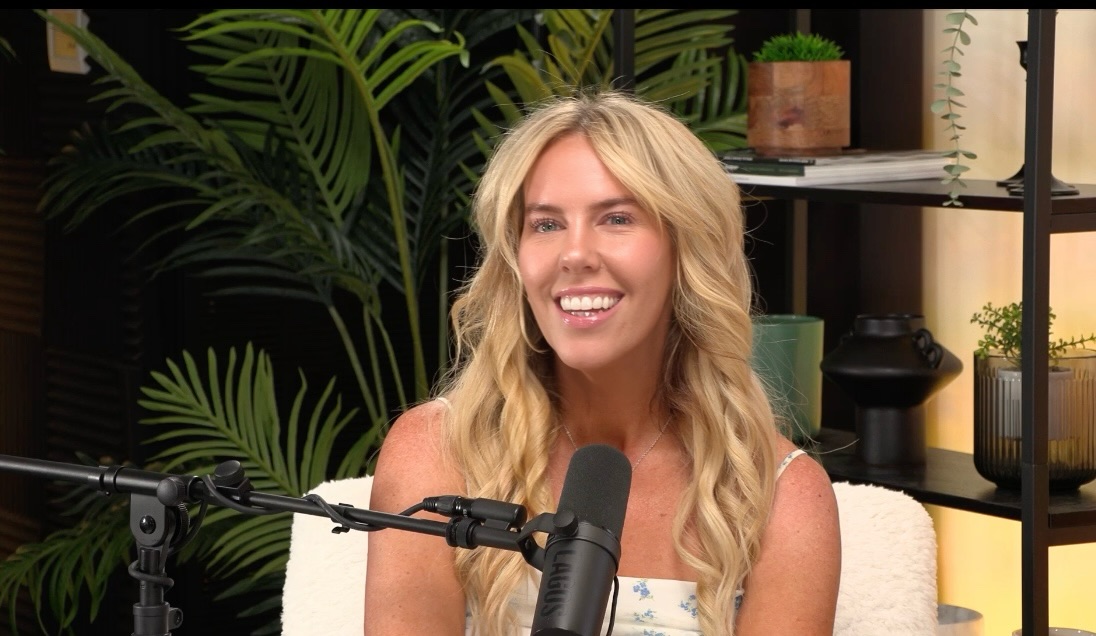Alright – so today we’ve got the honor of introducing you to Yooyeon Nam. We think you’ll enjoy our conversation, we’ve shared it below.
Yooyeon, we’re so excited for our community to get to know you and learn from your journey and the wisdom you’ve acquired over time. Let’s kick things off with a discussion on self-confidence and self-esteem. How did you develop yours?
The essence of being a painter lies in my confidence and self-esteem. I believe my work is exceptional, meaningful, and holds significant importance. My confidence grew as I transitioned from a businesswoman in South Korea to a painter in the U.S. Discovering my true passion and dedicating myself to it was transformative.
Growing up in Korea, I had a rigorous academic education and went to a business school, even though I knew that I am not a great fit in the field. There was an immense amount of pressure to study something financially stable. Until I was 22, I struggled to find direction, doubting everything I tried. Most of the jobs available to me as a business major focused on meeting customers’ needs rather than exploring my own desires. I initially thought I would work as a promoter and supporter of art and culture, while also worrying about making a living. However, after attending several exhibitions and music festivals, I realized that I wanted to be a painter, regardless of what the future held. I began art but then took a long hiatus- first to finish my study in business, then to work in an office- before I came to the U.S. to be a part of a larger art scene.
When I finally began studying painting in New York, I regained confidence in myself as an artist. I earned my BFA in Painting from Pratt Institute, graduating with the highest honors and excellence in academic achievement. Though I still occasionally doubt the quality of my work and continuously strive to improve, I am certain that I will never regret my decision to live as a painter. Painting is not just a job; it is a continuous journey of self-discovery, one that fills me with confidence every day.


Thanks for sharing that. So, before we get any further into our conversation, can you tell our readers a bit about yourself and what you’re working on?
I am a Korean born, New York based colorist oil painter. Through my original characters, my works explore the weird nature of the world, where we are disconnected from each other within our own community. Through my work I investigate what it is to be an outsider in both my own culture and the chosen culture. The eerie discomfort is further evoked through the usage of a wide array of colors and mysterious narratives. By depicting my characters as overly cute and adorable to suffer or be violent, I accentuate the sense of uncanniness, paradoxically intensifying the seriousness of my narratives.
My child-like, round-faced, nose-less characters embody both my personal feelings of displacement and my cultural heritage. These figures, with their blank faces and pupil-less eyes, gaze downward, reflecting Korean cultural norms where direct eye contact and overt emotional expression are considered impolite. This cultural difference was a challenge for me in environments where direct eye contact is expected.
I combine my personal sense of alienation with my longstanding admiration for Korean Buddha sculptures, which are pupil-less and often depicted with downcast eyes to create a sense that they are observing the viewer. I am drawn to these sculptures for their idealized yet anatomically inaccurate forms, which mirrors my effort to make my work believable, even though it originates from my imagination. These sculptures also possess an inherent mystery, capturing a moment just before or after enlightenment.
Beyond the hardships arising from cultural differences, I consider the world to be inherently strange, as it lacks any innate meaning. I resonate with Jean-Paul Sartre’s quote, “Existence precedes essence,” which suggests that life has no predetermined purpose. While accepting the lack of meaning in my own life is challenging, it grants me the ultimate freedom to pursue whatever I wish. This bittersweet feeling of being both meaningless and free is represented in my work through fantastical narratives, figures that are both violent and comforting, and a wide range of colors.
My first gallery solo show “No Home in Wonderland” is now open at A Space Gallery, at 13 Grattan Street, Brooklyn, New York. I am really excited to officially show my 18 works to the public for the first time with a gallery. The gallery director and I thoroughly went through all lists of my works and carefully selected these paintings. It is open until September 4th, Thursday through Sunday, 2-6pm! Please contact me through DM so that I can come when you are visiting.
I will be at Woodstock Byrdcliffe Artist Residency in Upstate New York for the rest of the September, come back with more works, and meet you!


There is so much advice out there about all the different skills and qualities folks need to develop in order to succeed in today’s highly competitive environment and often it can feel overwhelming. So, if we had to break it down to just the three that matter most, which three skills or qualities would you focus on?
Perseverance, self-esteem, and politeness are the most important qualities for a painter.
Painting and other artistic practices require sustained effort to achieve specific goals. Despite the media often portraying artists as born geniuses, this isn’t true, especially in painting. We perceive the world in three dimensions, yet painting translates it onto a two-dimensional surface, demanding countless hours of practice to internalize how to look at the flat surface. Perseverance is essential, requiring continuous practice and dedication.
Self-esteem fuels perseverance. Even during moments of doubt, confidence in my path allows me to persist without needing external validation. When self-esteem is strong, internal satisfaction is enough. For me, painting is not a form of job; it is my identity and lifestyle. That’s why I keep my money-earning job separate from my work as a painter.
Once I’ve created a substantial body of work and feel content with my achievements, the next step is finding a venue to showcase my art. Politeness in everyday interactions plays a crucial role in this process. While many painters create remarkable work, not all succeed in getting it exhibited. Exhibiting art involves more than just the work itself; it’s about the relationships between the artist and those who own or manage the spaces. Networking is vital, but I believe that politeness and respect in these interactions are more important than simply being extroverted.
Three essential skills for painting are a sense of color, a sense of composition, and the ability to articulate the story behind the work.
Painting is fundamentally about color. Even a line on a canvas is a strip of color. The relationships between colors, along with their coherence and harmony, are the essence of a painting. Colors are what make a painting instantly appealing or not. Composition is equally important, as it dictates how colors occupy specific areas on the canvas. The ability to explain the story behind the work is also crucial. Unlike other forms of art, visual art doesn’t have lyrics or a fixed way to convey its meaning. People who are interested in your work will want to hear about it, so it’s always helpful to be prepared to discuss your art with viewers.
Art history, film, and business are the most important areas of knowledge to me.
There are reasons why certain paintings have become historically significant and continue to captivate people. Understanding these reasons is valuable, as I can incorporate similar elements into my own work. This approach is often found among painters and recognizing it in others’ work can also spark conversations with fellow artists at exhibitions or other events.
Film, as the most popular visual art form today, offers insights that are worth studying, especially its mise en scène. Great films are meticulously crafted with thoughtful compositions, color palettes, narratives, and symbols. A single still from a film can encapsulate the essence of the entire story, as paintings try to do, and I find that there’s much to learn from film in terms of narratives, symbolism and composition.
Finally, business knowledge is essential. While making money isn’t my primary goal as a painter, the practical aspects of being an artist—promotion, sales, contracts with galleries, and working with clients—require a solid understanding of business. Having studied business before becoming a painter, I recognize the importance of knowing how to run the business side of my art career.


As we end our chat, is there a book you can leave people with that’s been meaningful to you and your development?
I believe that our lives have no predetermined purpose, as expressed in Jean-Paul Sartre’s quote, “Existence precedes essence.” The bittersweet feeling of being both meaningless and free drives me to seek what can fill the emptiness in my life. I found an answer in the book The God of Small Things by Arundhati Roy. Written in 1997 by an Indian author and women’s rights activist, the novel explores how a family and a couple are oppressed due to their caste status. While the theme might seem cliché, the way Roy tells the story and how her characters navigate their inevitable tragedy is extraordinary.
The characters in the novel cannot dwell on big things—social principles, rules, ideology, goals, or purposes—but must instead focus on small things like love, friendship, caring, and living in the present, since they don’t know what will happen tomorrow. Ironically, these small things are bigger and more deserving of our attention if the bigger things are oppressive to the weak. Through this book, I learned to articulate my empathy for the world, respect others, and to fill my life with small things. The so-called big things are sometimes illusions without the small things, and by caring about the small things, we can improve the bigger things as well.
Contact Info:
- Website: https://yooyeonnam.modoo.at/
- Instagram: https://www.instagram.com/yooyeon_nam/?hl=en
- Linkedin: https://www.linkedin.com/in/yooyeon-nam-92a92a27a/







Image Credits
Photo #1, 4, 6, 7, 8, 10, 11, 13 credits to A Space Gallery (ig: @aspace____)
so if you or someone you know deserves recognition please let us know here.




